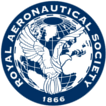Aircraft of the future may look very different from the conventional designs of today. Bill Read reports from Day 1 of the International Council of the Aeronautical Sciences (ICAS) conference in Nice which included research on some concepts as electrically-powered passenger aircraft, flying cars, hydrogen-powered cargo aircraft and an airship shaped like a doughnut.
“The role of ICAS is to look beyond short term market advantages and bring together the intellectual power of the aeronautics community to accelerate progress in key areas and to provide a forum for debate and an environment for interaction.”
These words, from the introductionary keynote speech given by the president of the International Council of the Aeronautical Sciences, Professor Ian Poll, have certainly been realised during the first day of the ICAS conference here in Nice.
A total of 11 parallel sessions have covered a wide range of subjects from UAVs, through aero engines, structures, environment and safety to wake vortices.
Today saw presentations on future aircraft concepts and some intriguing visions of how aircraft might look in future. The designs of tomorrow are being influenced by a number of factors, including the need for more efficient and ‘greener’ designs, alternative fuel sources and new methods of operation - including the fuel-saving possibilities offered by air-to-air refuelling of passenger aircraft while in flight.
Among the presentations was the latest research into the feasibility of cargo and passenger blended-wing bodies, as well as some even stranger-looking designs featuring straight natural laminar flow wings as well as box wings.
Another paper looked at how aircraft could be powered by a series of electric engines mounted side by side on the wing powered by one or two turbofans mounted on the wingtip. Different propulsion system were also covered in a fascinating study which looked how an ATR 42 turboprop freighter aircraft could be powered by hydrogen stored in fuel tanks mounted inside the fuselage.
The subject of future sports aircraft was also covered with alternative designs powered by solar energy, batteries and fuel cells. Other projects covered included a morphing flying car and, for fans of lighter-than-air designs, a Japanese project featuring a circular, doughnut-shaped airship called Torus.
More details of these and other projects will be featured in the November issue of Aerospace International.






